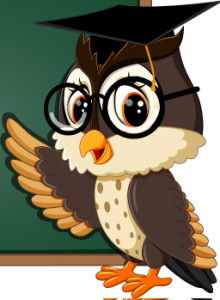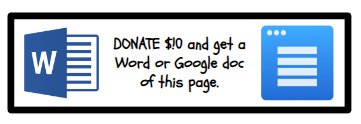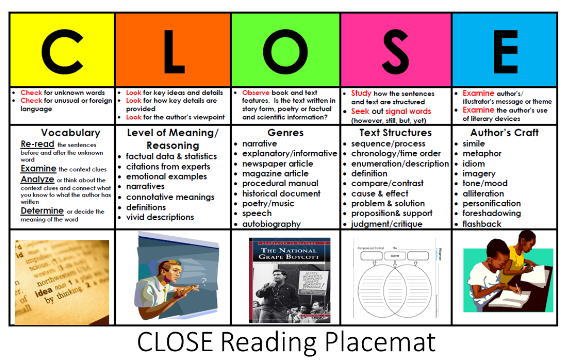


Reading Strategy Objectives
Also, see Reading Comprehension Strategies and Mentor Texts for Reading Strategies!

FREE placemat created by Beryl Bailey on TPT.
3rd time ~ to better comprehend and to be able to answer questions, cite evidence, state main ideas/details, make connections., and more.
My teacher will say:
- What evidence in the text made you answer that way?
Ticket to Leave: How will what you learned today help you to read other things?

Additional reading skills to work on. . .
The main idea of a paragraph is usually stated in the first or last sentence because the first sentence is usually the topic sentence, and the last sentence is usually the summarizing sentence. If the main idea is unstated, circle the most repeated words and put them in a sentence to state the main idea!
Activating Schema or Background Knowledge
Expanding Meaning by Determining Importance
Expanding Meaning by Cause and Effect
Expanding Meaning by Comparing
Expanding Meaning by Contrasting
Expanding Meaning by Reciprocal Teaching
Expanding Meaning With Test-Taking Strategies
Expanding Meaning With Reading Responses

Strategy 5
Noticing Nonfiction Text Features
GOAL: To understand that nonfiction text features serve to enhance comprehension.
WHY? To learn information.
Today I will:
- Preview text for features.
- Explain how the feature aids in understanding.
- Read at a slower pace.
- Reference features during and after reading.
My teacher will say:
- Tell me about ________. How do you know?
- What on the page might help you?
Ticket to Leave: How will what you learned today help you to read other things?

Questions:
- Comprehension Questions for Leveled Texts and Comprehension Strategies and Questioning Stems
- Before, During, and After Strategies – Strategies Organizational Chart and Reading Rockets
- Comprehension Interview
- Reading strategies by level
Posters:
Graphic Organizers:
Elements of Explicit Comprehension Skill Instruction ~ use ALL of these as you teach each strategy! (By Nancy Boyles, 2017)
Link – Show how today’s lesson connects to yesterday’s lesson. Then, explain how learning this material applies to today.
Explain – What to do and how to do it. Show an exemplar.
Model – Provide 1 example. Involve students.
Pause and Prompt—Pause to retrieve evidence. For example, “How does this detail. . .”
Practice ~ with Feedback – Oral practice, graphic organizers, accountable talk, and constant feedback.
Independence – The goal for all. Remove all scaffolds over time.
Reflection – Reflect on the learning. What did you do? How did it go? What will you work on tomorrow?
Copyright 05/04/2012
Edited on 03/17/2024
Copyscape alerts me to duplicate content. Please respect my work.
![]()
